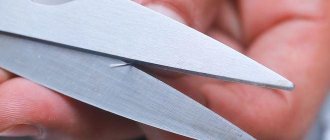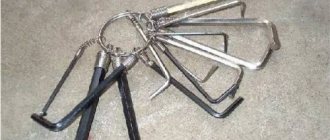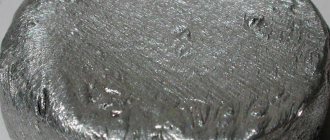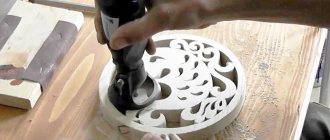How to replace solder
Solder at home can be replaced with:
| Solder option | Description |
| Aspirin | Probably the most affordable option, since it can be found in every first aid kit. To carry out high-quality soldering, be sure to use only a highly concentrated solution. It is also important to consider that soldering with acetylsalicylic acid is accompanied by an unpleasant odor. Therefore, it is important to ensure good ventilation; the room should be well ventilated. |
| Fat | An affordable product with low cost. The main disadvantages of fat are its consistency and unpleasant odor. However, it melts easily and spreads across solder joints. When considering options for replacing solder for soldering, fat cannot be ignored. |
| Resin | It is better to use tree resin, especially coniferous ones. It is a non-aggressive substance that is easy to melt and spread over the surface. Can be used for various soldering and tinning applications. |
| Amber | Exotic and expensive option. However, due to its similar characteristics to rosin, it is the best option for soldering at home. The main disadvantage is low availability. Finding amber is not so easy. |
| Rosin for instruments | Used for rubbing the bows of musical instruments. However, it can be used for soldering, since it has characteristics similar to ordinary rosin. |
Sometimes it happens that you need to find a way to replace solder for soldering, since you don’t have regular rosin at home. At home, you can use many fairly relevant options, some are more affordable, others, on the contrary, will be more difficult to find.
Even acetic and citric acids provide a weak effect, so they can also be used for soldering.
Using Alternative Soldering Media
Soldering work is standard for any chosen product; differences can only be observed at the preparatory stage:
- the fat must be melted or heated;
- prepare a solution from aspirin;
- No preparation is required for resin, amber, and bow rosin.
The use of analogues cannot be a complete replacement for soldering rosin, however, when you don’t have it at hand, they will be an ideal way to achieve the desired result.
You also need to take into account that home methods are not suitable for production purposes. The quality of soldering will be significantly worse than when using standard soldering.
How to make solder at home
Many radio amateurs know how to make solder for soldering. To do this, you need to know the characteristics of solders and the ratio of elements. Scrap metal or waste parts from devices, batteries, coins, etc. can be used as raw materials. What can be used as solder, and where to find the substances:
- Tin can be removed from light bulbs or circuit boards of old unnecessary equipment. The walls of food cans and lids are covered with a thin layer.
- Lead is found in a pure state in batteries, cables, and car wheels.
Low-melting metals are used as solders (relative to the melting point of the parts being connected). These are mainly two-component alloys, less often 3-component. The ratio of these elements is of primary importance: with an increase in the content of a more fusible metal in the composition, the melting point decreases, and vice versa. We'll tell you in this article how to make silver solder at home, the most refractory of all existing ones.
Where can I get lead?
We'll list the main sources where you can get lead, so you can choose the one that suits you best.
- From the battery Failed power supplies have a large supply of non-ferrous metal. ...
- Cable scrap...
- Fishing sinker...
- Car wheel …
- Other metal sources
Interesting materials:
Why are riddles useful? How to gargle before a performance? Why is Ibiza popular? How to glue carpet to the wall? How to glue plastic to plastic? How to glue a chevron onto fabric? How to water the beds before planting? How to saturate wood before varnishing? How to cut a hole for a socket? What would Pascal become famous for briefly?
Types and features of solders
Important! Low-melting solders up to 450° C are applied using a soldering iron, refractory solders (up to 1100° C) are fused with a gas torch.
To avoid damage to the product, you can learn how to make solder at home. There are 3 main types.
A large proportion of solders used for soldering electronics are tin-based. The second and essential component is lead. Depending on the proportions, the properties of the solder differ: the higher the lead content, the higher the melting point. To increase the strength and melting temperature, a third element can be added to the solder: cadmium, antimony.
Lead-free solders are a new development by chemists. Such solders are made on the basis of tin, but with the addition of silver, cadmium, zinc, copper, and aluminum. All tin-based solders have high adhesion to metal surfaces. They wash off well with acids and also allow you to work with a large number of metals. They are classified as low-melting and are marked with PIC indices.
How much does 1 kg of zinc cost?
Prices
| Type of scrap | Requirements | Cost per kg scrap |
| Ts1, Ts0 - zinc pigs and pieces of sheets, pipes | zinc content 99.9% | 110–120 rub. |
| Ts2, Ts3 - lump waste of unalloyed zinc | zinc content up to 97.5% | 70–80 rub. |
| Zinc dross, hartzink | zinc content 70–90% | 90–100 rub. |
| Scrap zinc-copper alloy | zinc content up to 45% | 150–159 rub. |
Manufacturing instructions
We prepare solder for soldering silver with our own hands. Since a burner is used to melt refractory elements, we do this in a garage or workshop. Silver solder consists of 2 elements:
- silver in the amount of 3 grams;
- brass (copper + zinc) 1 gr.
Silver must be as pure as possible - 925. As brass, you can use broken brass products and coins. Or take a ratio of 70% copper and 30% zinc. The two-component alloy should be in exactly this ratio, since when the zinc content increases to 40%, brittleness increases.
It is necessary to melt the elements first of all that have a high melting point and add the rest as they decrease. The melting point of copper is 1080° C, silver – 930° C, zinc – 420° C.
To produce homemade solder, we will need a small mold and a bowl in which we will melt. It's best if it's cast iron. Warm up the mold and add a little wax to it, heat the bowl. If we use ready-made brass, then melting begins with silver. If these are 3 separate elements, then we start melting with copper. If the melting is not complete, add silver; when mixing, the process begins to happen faster. Finally add zinc. Without ceasing to heat the bowl of metal, we pour the resulting melt into the mold. Cooling of the melt occurs very quickly, in a matter of seconds. After crystallization, the resulting workpiece can be cooled.
How can I replace tin solder for soldering? This category is characterized by high ductility and adhesion to metal surfaces. Low refractoriness allows the use of solder for non-ferrous metals and thin parts. A mixture is obtained by mixing tin and lead in their pure form. The elements themselves can be obtained chemically by extracting tin from cans and lids. We do it step by step:
- Pour water into a jar, put it on fire and boil. Mine.
- We connect 3 batteries and a 9-2 volt battery. We connect the positive pole to the jar, the negative pole to metal of any shape (let it be an electrode).
- Fill the jar with sodium hydroxide or soda solution.
- We lower the electrode into the jar, but so that it does not touch its walls.
- Over time, a deposit of pure tin will appear on the anode (electrode).
The method for extracting tin from old circuit boards requires the use of hydrochloric acid followed by leaching.
It is much easier to obtain lead at home; all you need to do is:
- disassemble the old battery;
- find fishing weights or shot;
- disassemble and clean the lead cable;
- finding unnecessary seals from the water meter.
Recommendations for use
Important! Initially, the most refractory metal is melted, after which the remaining components are added in descending order.
Solder is used in 3 types: wire, powder or chips and plate. The choice of shape is determined either by personal preference or by design features.
If you are looking for where to get solder at home, if you don’t have a store-bought one at hand, determine the degree of importance of the product. It is possible that the resulting solder will not match the desired chemical composition and will not provide mechanical parameters.
Conclusion
There are several alternatives to replacing solder. Let us highlight the goals that are achieved by soldering: rigid fastening of parts (for electronics - preserving the conductive ability of the element). This result can be achieved by using the following types of glue:
- epoxy resin;
- glue gun.
The disadvantage of this connection can be considered the high fragility of the resin and the low strength of hot glue. If these shortcomings are unacceptable and there is no solder, then you can make even the most refractory copper solder with your own hands.
How to get tin chloride at home?
A simpler and cheaper method for producing tin chloride is to use tin-lead solder.
- You need to take concentrated hydrochloric acid, bring it to a boil and dissolve solder in it.
- The next step is to strongly cool the solution, during which lead chloride will precipitate in it.
- The resulting precipitate is filtered with decantation, and an electrolyte (which is practically pure tin chloride with a small amount of impurities) is prepared based on the filtered solution.
- Due to the rapid oxidation of stannous chloride, the resulting solution must be used immediately.
Video on how to make tin chloride at home
How to get pure tin at home?
In order to make an electrolyte, you need to take a small portion of tin chloride as a seed. Later, after isolation, it will be possible to prepare a purer chloride solution. To do this, you will need to take aqua regia or hydrochloric acid and dissolve the metal. Pour an alkaline solution (9-10%) into a 7% solution of SnCl2 (tin chloride), stirring constantly, as a result of which the formation and precipitation of a white precipitate - tin hydroxide - will be observed. It is necessary to stir the solution until it becomes completely transparent, which will indicate the readiness of the electrolyte.
How to make tin at home? To do this, you will need a fairly large tin can (3-5 liters) and a lid made of dielectric material. The cans have a tinned inner surface - that is, a layer of tin that protects the iron can itself from oxidation, and the food product contained in it from spoilage. Therefore, it is possible to extract tin from jars for reuse. You need to remove the sticker from the jar and remove dirt from it, for which you need to boil it in a strong soda solution for 30 minutes. The following is done:
- A carbon cathode is placed in the center of the jar.
- Connect the anode to the can body.
- Fill the electrolyte and connect the power supply (4V). To do this, you can take several batteries connected in series or an accumulator.
- To increase the amount of tin produced, cut some old cans into pieces and put them in the electrolyser. In this case, it is necessary to prevent their contact with the cathode. One medium-sized tin contains 0.5 g of tin.
- The result of the experiment is the release of spongy tin at the cathode. It must be collected and melted in a crucible into a metal with a characteristic silver color. Why can tin be melted at home? Because it has a melting point of 239˚C, and iron, for comparison, is 1538.85˚C.
Video about tin casting at home
Tin casting at home
Today, making small figurines and products from tin at home is not only interesting, but also quite profitable. After all, many collectors are willing to pay a lot of money for a tin soldier, a model of military equipment, or just a souvenir. Amateur artists who want to learn how to cast parts usually use tin for this, since it has the following positive qualities:
- Attractive beautiful color similar to silver.
- Tin is technologically advanced and has a low melting point.
- Plastic, easy to engrave and mint, “molded” with a soldering iron.
A skilled craftsman, using simple equipment, is able to turn a small silver ingot into a beautiful sculpture, lantern, candlestick, casket, medal, brooch, bracelet, cufflink and much more. In addition, openwork and relief plates are created from tin to decorate boxes, decorate door hinges, handles, and keyholes. How is tin casting done at home? This process consists of the following stages and features:
- The production of future products begins with the creation of color sketches on a sheet of paper.
- Then polymer clay is taken and a figurine is prepared from it to create a mold. In this case, every smallest detail is applied with a stack and a thin awl.
- Making the mold is the most critical stage. It must have the perfect connector. This is necessary for easy and safe removal of the casting. As a rule, casting molds are made collapsible, consisting of 2 parts.
- The most optimal material for the mold is plaster or silicone, but in order to make a silicone mold, you need to spend much more material and time.
- In addition, stores sell special sealants that are poured onto models, they harden and thus become reusable molds for pouring.
- In cases where the future product will contain many small parts, the mold is made with an insert.
- The size of the channel in the mold through which the metal is poured into it plays an important role. The smaller it is, the slower the mold is filled, and there is a danger of the metal cooling quickly, which can lead to the formation of cavities.
- When casting a part, the two halves of the mold should be folded together and placed between a plywood sheet about 12 millimeters thick. Then they need to be pulled together with a tight elastic band.
- After preparing the mold, the metal is heated. The readiness of the alloy for pouring is determined by the formation of a yellowish film. If the metal is overheated, the film will acquire a blue or purple tint.
- Pouring metal into the mold must be done in a thin stream, while tapping the mold a little, thus preventing air retention in it. It is necessary to remember the rules for safe work with heated alloys.
- After the mold is filled with metal, it is required to leave it for some time to cool and harden the alloy inside it.
- Then the mold is opened, and the finished product is carefully removed from it using tongs. As a rule, there are always defects on the first product. Therefore, the figurine is further processed - the flash (metal that has flowed into the seams between the two parts of the form) is removed. They are cleaned off using tools such as a scalpel or scraper.
- Next, the seams are sanded with fairly fine sandpaper. When making complex figures and products that are cast in separate parts, these parts are connected with a soldering iron.
- In order to glue small parts, epoxy glue is used. The places where the parts were soldered and glued are carefully and accurately sanded.
- Then you should prepare a strong soda solution and wash the finished figurine in it with a thin brush to remove the flux.
- If necessary, the finished product is painted with acrylic paints.
Having successfully mastered this fascinating ancient craft, a skilled craftsman will have the opportunity not only to do what he loves, but also to earn good money. Plus, it would make a great 10th wedding anniversary (tin anniversary) gift.
Have you ever thought about how to get tin at home? Did you succeed? Tell us about it in the comments.
How to use solder for soldering?
The best solder for soldering metals is pure tin. But in practice, an alloy is used in which tin is the base and lead is added. Similar solders can be found on sale, and there are many brands. If desired, you can make it yourself if all the necessary ingredients are available. Tin and lead solder is designated by three letters - POS, followed by a number. The most popular brands are POS-60 and POS-40. The numbers are the percentage of lead in the mixture. Such solders are used for soldering both brass and radioelements and copper wires.
Hard soldering diagram.
Making solder yourself
To make solder for soldering at home, you will need the following ingredients:
- Lead.
- Tin.
You also need the following tools:
Materials and tools for brass soldering.
- Ceramic forms (can be made of plaster or tin).
- Steel spoon.
- Steel stick.
- Container (preferably steel).
Don't forget that you are working with lead, one of the dangerous metals. Wear goggles and a respirator, ventilate the room. For convenience, wear gloves to avoid getting burned. Melt lead and tin over a gas burner in a container, weighing them on scales in advance and achieving the desired proportion. Using a steel spoon, remove the “fat” - the slag on the surface. And, stirring with a steel rod so that the metals combine evenly, pour the melt into the molds. That's it, the solder for soldering copper wires and radio elements is ready, you can begin installation work. Don't forget to ventilate the room.
Alloys
According to their classification, tin alloys are divided into solders, bearing and low-melting alloys.
- Babbitts. Lead, copper, and antimony are added to them. Babbitts may have alloying additives. Babbitt markings: B88, B83, B83S.
- Bronze is an alloy of copper and tin. Any bronze contains small additions of phosphorus, zinc, lead, nickel and other elements. Bronze grades: Br OF 6.5-0.15; Br.OTs 4-3; Br.OTs10-2; Br.OF 10-1; Br.ONS 11-4-3.
- Pewter. An alloy with bismuth, antimony, copper, and occasionally lead.
- Solders. There are hard and fusible. Lead and other elements are added to the alloy. Solder brands: POS-30, POS-40, POS-90.
Pros and cons of tin
The advantages include:
- Non-toxicity allows the metal to be used in the food industry and in the production of tableware.
- Decent anti-corrosion resistance in aggressive environments.
- Does not react with sulfur; therefore, they are used wherever metal is “wrapped” in rubber or plastic insulation.
Flaws:
- Susceptible to the "tin plague".
- The rather high cost limits the widespread use of the metal.
- Low melting point (only 232°C).
How to solder brass correctly?
With amateur radio solders everything is very clear, but sometimes it is necessary to solder more massive parts. It is especially difficult to work with brass elements, since during soldering an oxide film forms on the metal. Zinc also evaporates during heating, since brass contains a large amount of this metal. There is only one way out - you need to solder at a low temperature, using tin and lead solder. But it is necessary to use a flux; the most common one is made from rosin and alcohol.
To solder L-63 brass, you need to use a flux that contains sweat acid and zinc chloride. Very high mechanical strength cannot be achieved. Compared to soldering copper, the strength of brass will be half as strong. This is largely due to the fact that the seams have a porous structure. Moreover, pores are formed with any soldering method, both at high and low temperatures. Soldering brass in a gas environment is often used (provided that fluxing was carried out before starting work). It is permissible not to use flux if there is a layer of nickel or copper on the surface of the brass.
In a salt bath at a temperature of 850 degrees, you can solder brass elements. The main thing is to add a little flux to the saline solution, which contains potassium fluorobate. Flux should be approximately 4-5% of the total mass of the brine solution. Flux is needed to ensure that the solder penetrates as best as possible into the gap between the parts being joined.
Copper-rich brass can be soldered with the following solders:
Brass, which has a low melting point, requires the following soldering alloys:
For soldering brass, which has a high percentage of zinc, use PSR-40 solder grade.
It is impossible to use copper-phosphorus solder, since the connection turns out to be low-plasticity due to the formation of zinc phosphides on the surface of the seam during soldering.
If during operation of elements that are subject to soldering, dynamic and vibration loads do not occur, then it is allowed to use PMC-48 and PMC-36 solder.
How can you solder without rosin?
Soldering should be carried out under the stearin layer. Some craftsmen to replace rosin
, the well-known BF-6 glue is smeared onto the cleaned metal surface.
solder
while pressing the soldering iron firmly.
Interesting materials:
How to align all shapes in Word? How to align all slides? How to set the spacing between lines in Word? How to dry sneakers in winter? How to dry a floor after flooding? How to get enough sleep in the morning? How to remove paper from Canon MF 3010 printer? How to withdraw money from a Qiwi wallet? How to get money from qiwi? How to remove contacts from iTunes?
Where can I get tin?
I need a certain amount of tin - I wanted to cast it here in my spare time. anything.
I just can’t even imagine where they get it.
- pro
- Group: Users
- Posts: 7,654
at non-ferrous metal collection points! outbid, or wait for those who bring))
P.S. steelworker?? are you doing HARD? )) P.P.S. fuck with me?))))
- V-Twin Drag Machine
- Group: Users
- Messages: 2,990
- male chauvinist pig
- Group: Users
- Posts: 8,156
- coffee for me!
- Group: Users
- Posts: 2,283











